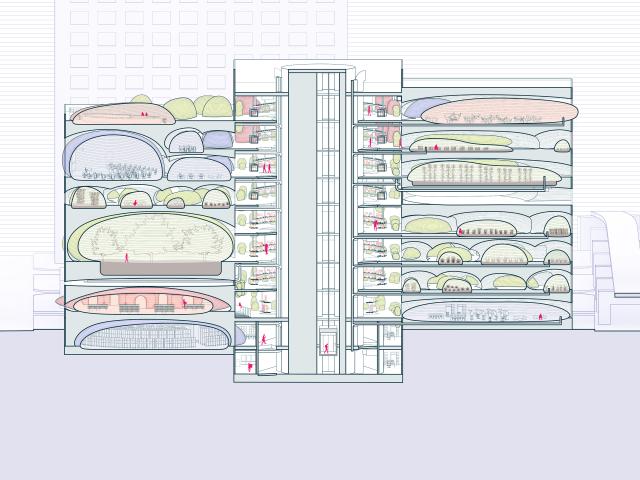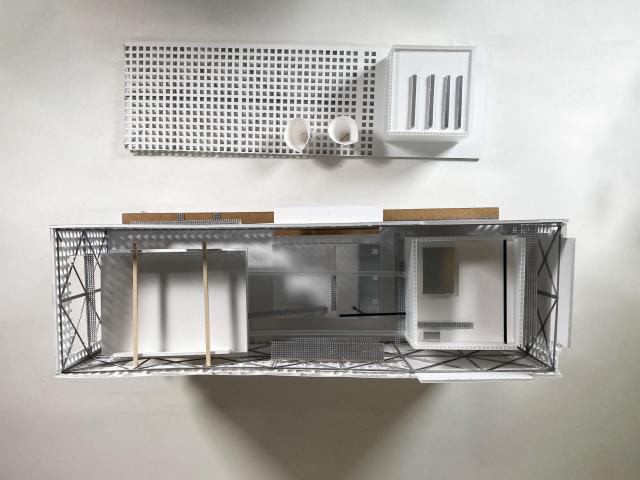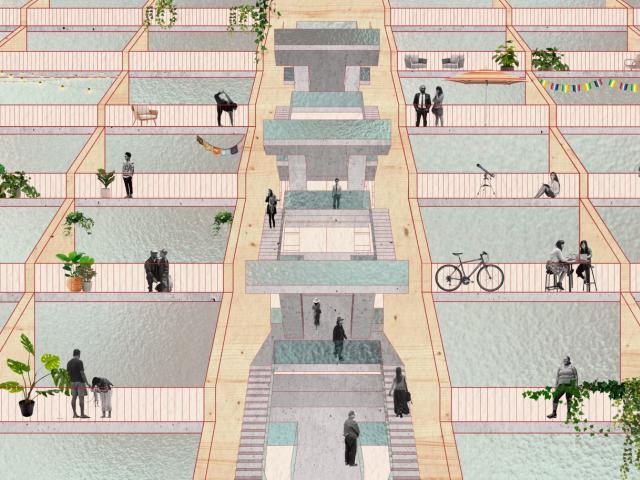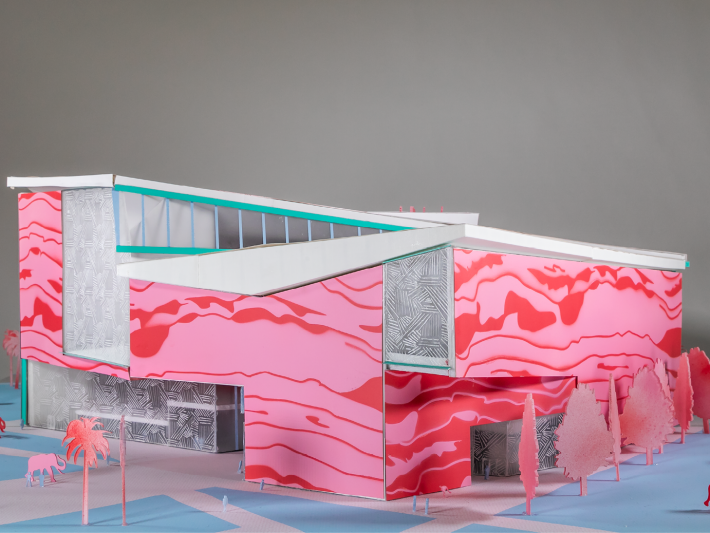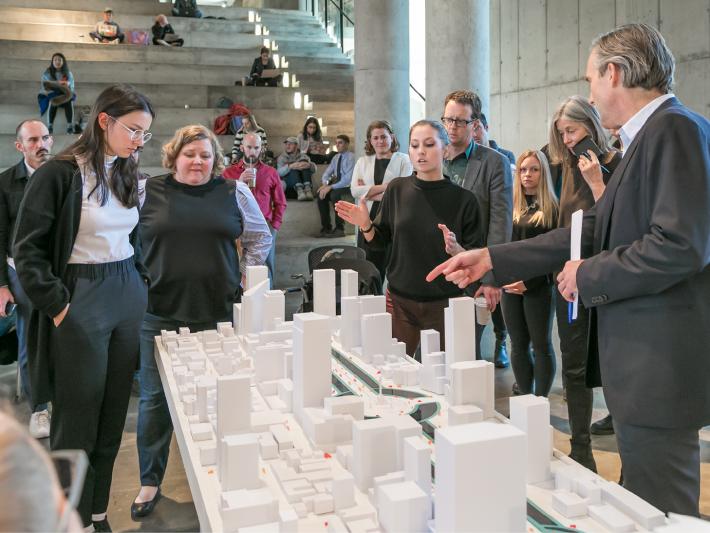Designing An Urban Agricultural Guild: Gui Competition 2022
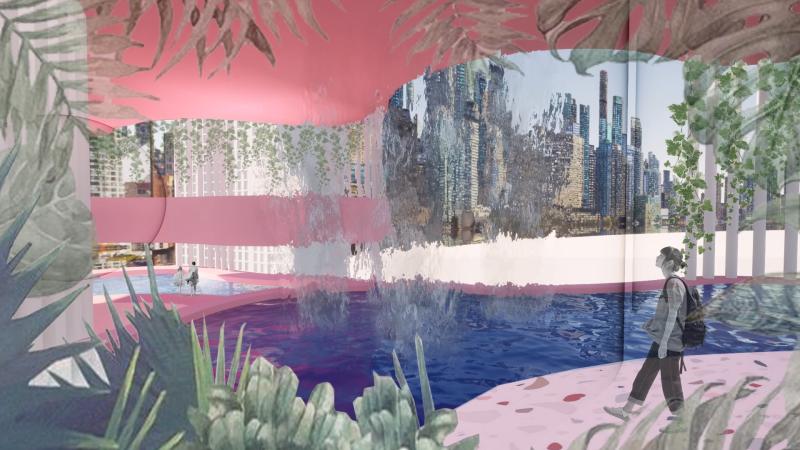
Designing An Urban Agricultural Guild: Gui Competition 2022
As Blythe Atzbach prepared her materials for presentation at the 2022 GUI Competition, she positioned her pet fish, Steve, next to her model. Steve swam beneath the dangling roots of turnip sprouts in a small tank.
Three months earlier, when Atzbach made the decision to develop a plan that focused on aquaponics farming, a system in which fish, plants, and water work together, she immersed herself—and Steve—in an experiment to test her design approach.
Following presentations from the twelve 2022 GUI Competition Finalists at the end of the spring semester, Atzbach’s project The Lake House was selected as the winner.

Tyler Johnson’s Soul Building was awarded second place, and Jenna Call and Ethan Lethander shared the third-place award for their No Refunds* and Like Baking Into a Dream respectively.
Related
The annual competition is a part of the Senior Architecture Design Studio. The prompt for this year’s event was to design an urban agricultural guild in Chicago. Students were asked to consider food from seeds to consumption:
This project for an urban architectural guild is about food from seeds to consumption as a process that foregrounds both the human in the loop and the environment; and a system that includes a rich set of disciplinary agents and their practices from biology and the environmental sciences, to production process chains, belief systems, cultural norms, high art cuisine, innovation, equity and food justice. This project will look at the entire food process from seeds and cultivation to the sharing of food as socio-cultural entities.
The program comprised 150–200,000 square feet on a half-block infill site in the River North area of Chicago and had seven components: seed bank and museum, growing and harvesting, distributing, preparing and learning to prepare, eating/sharing, knowledge building/educating, and infrastructure.
Jurors for the competition were Merrill Elam, co-principal of Mack Scogin Merrill Elam Architects, Inc., Lydia Kallipoliti, assistant professor at the Cooper Union in New York, and Knowlton School Associate Professor of Architecture Curtis Roth.
Media Gallery










Atzbach’s winning project treated the high cost of water provided by private companies to low-income communities as a central problem. As a solution, the project uses plants to provide clean and affordable drinking water. The Lake House project consists of a series of lakes housing different programs. Rainwater is collected and filtered at various locations throughout the building; water then flows down into the lakes and is pumped back to the top of the building through pipes.
“Not all plants will grow perfectly, which is why their waste can be burnt at the bottom and the gas from the fire can pump into the ‘cloud bubbles’ that are filled with cold air,” said Atzbach. “The mixture of the gas and air emulates a cloud and condensates drinking water. This new water would be used in my public water bank—providing free water to the community.”
Boat planters are carried from a seed bank up to harvesting lakes, where they become part of the aquaponics system. The boats have sensors that can determine how much sunlight plants need, allowing the plants to be distributed to various restaurants and markets throughout the building.
Media Gallery






“There were two things I really appreciated about this project: one, the experimentation, and two, how the technical challenges of food recycling and nutrient streams were turned into a remarkable public experience,” said Associate Professor of Architecture Curtis Roth.
“There was also this idea of playfulness and the welcoming attitude of the building that worked out well throughout the design,” added Merill Elam.
Atzbach commented that as an aspiring architect she has interest in designing buildings that people will enjoy: “I loved the opportunity to design for other living things like plants and fish. Architecture can make a great impact on our world and it was an amazing opportunity to scratch this surface.”
About the James E. Gui ’54 Design Competition
On May 3, 1996, the James E. Gui ’54 Design Competition Awards Fund was approved by The Ohio State University Board of Trustees. The Fund was generously established by Jim and Ann Gui through the OSU Foundation and will exist in perpetuity. This year’s competition marks the 25th annual James E. Gui ’54 Design Competition. The goal of the competition is to test the skills of students in the senior design studio in designing a project for a complex program on a challenging site. The competition stipulates that the jurors are to consist of a Knowlton School faculty, a local practitioner, and a nationally recognized architect.


